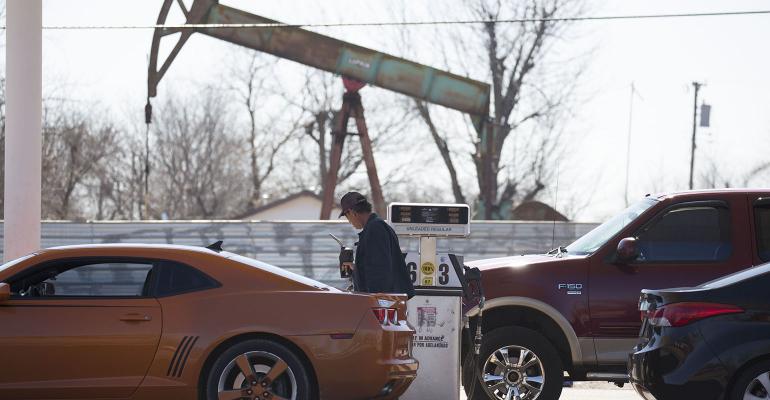Oil and gas prices have been on a bit of a roller coaster ride in recent months due in large part to the ongoing tug-of-war between the Organization of the Petroleum Exporting Countries (OPEC) and U.S. shale producers. In January 2017, the industry saw a rise in oil and gas prices in response to OPEC's agreement to cut production for the first time in eight years, but the increase was short-lived. U.S. shale producers stepped up production while the market was hot, and as of March 10, 2017, oil prices traded at $50.70 per barrel, down 8.9 percent from the previous month.
As counterintuitive as it might seem, this turn of events is good for investors in the long-term. The market is changing in subtle (but very pointed) ways that indicate the U.S. will become the next global leader in the oil industry. Think that's a bold claim? Maybe. But have a look at the reasoning behind it and then decide whether you agree.
OPEC's Agreement Indicative of Trouble in Paradise
When OPEC agreed to cut production, critics predicted the countries wouldn't stick to the deal, and with good reason. Lack of trust among the nations caused negotiations to drag on for months. Also, cartel members rarely stick to their agreements because there’s always a strong incentive to cheat. But, contrary to the naysayers, OPEC's production data for January showed over 90 percent compliance among participating countries. As of January 1, OPEC has successfully curbed its output by approximately 1.2 million barrels per day while Russia and 10 other non-OPEC producers have agreed to cut half as much.
Why would these countries refrain from going rogue and reaping great profits from producing more oil themselves while prices were rising? The answer: They're in panic mode. They need this deal to work or they will essentially go bankrupt.
Big Oil Producers in the Middle East Have Overplayed Their Hand
Middle Eastern countries like Iran, Iraq, Kuwait and Saudi Arabia have built their empires with profits from oil production. When the U.S. began to develop advanced hydraulic fracturing technologies (a.k.a fracking) to access more of its own reserves, these countries decided to overproduce oil in an effort to drive down prices and render fracking efforts unprofitable.
But those oil companies reliant on fracking for most of their production have played through the pain, so to speak. Meanwhile, OPEC countries had to tap deeply into their cash reserves to weather the price drops. In October 2015, CNN Money predicted that if the low prices continued, most countries in the region would run out of cash in five years or less.
Their rapidly depleting cash reserves were the catalyst for the recent OPEC agreement. The idea was to cut production in order to raise the price of oil and render their main export profitable again; many experts are saying this response is too little too late.
U.S. Shale Slated to Snatch Up Market Share
With production cuts by OPEC driving crude oil prices to over $55 per barrel as recently as December 2016, U.S. shale producers are ramping up production to benefit from the rising prices. And, thanks to technological advances in the last few years, it's cheaper to frack than ever before. In shale fields, production costs have nearly halved since 2014 and breakeven costs have followed suit. When prices were dipping, one shale play in North Dakota boasted breakeven costs of just $29.44 per barrel — that's down from $59.03 in 2014. Some conventional plays (non-shale) are even cheaper to produce at just $21 per barrel in 2016.
To say the U.S. is gaining ground on Saudi Arabia and its OPEC partners is an understatement. Bloomberg reported the U.S. surpassed Saudi Arabia as the world's biggest oil producer back in 2014, with the daily output of crude oil and liquids separated from natural gas exceeding 11 million barrels in the first quarter. The article further predicted U.S. oil output will increase to 13.1 million barrels a day by 2019. In other words, for Middle Eastern countries dependent on oil profits, the petro wolves aren't just at the door — they have let themselves in and made themselves at home.
Exciting Times Ahead for U.S. Oil and Gas
As the U.S. gains more market share, applied crowdfunding platforms using the latest financial technology have stepped in to connect accredited investors with qualified American oil and gas wells, granting greater accessibility to investors than ever before. And while fluctuating prices have left many investors wary of volatility, others are making moves to get in on the opportunity before the market upticks. For example, OPEC's announcement to cut production resulted in a 46 percent increase in signups the month of December 2016 on EnergyFunders, one such platform which focuses on efficiently produced conventional plays in America.
Suffice it to say, oil and gas is an option many will want to consider for diversifying one's investment portfolio in the current climate — especially with the U.S. poised to topple Saudi Arabia as the industry’s giant.
Philip Racusin is the Chief Executive Officer (CEO) of EnergyFunders, an online marketplace evolving the way capital investment and energy projects come together.





